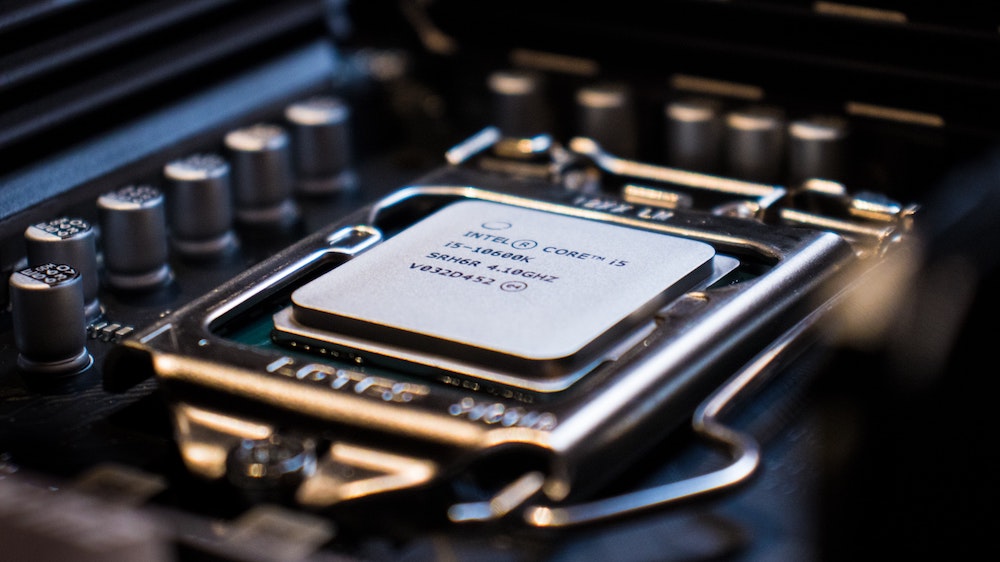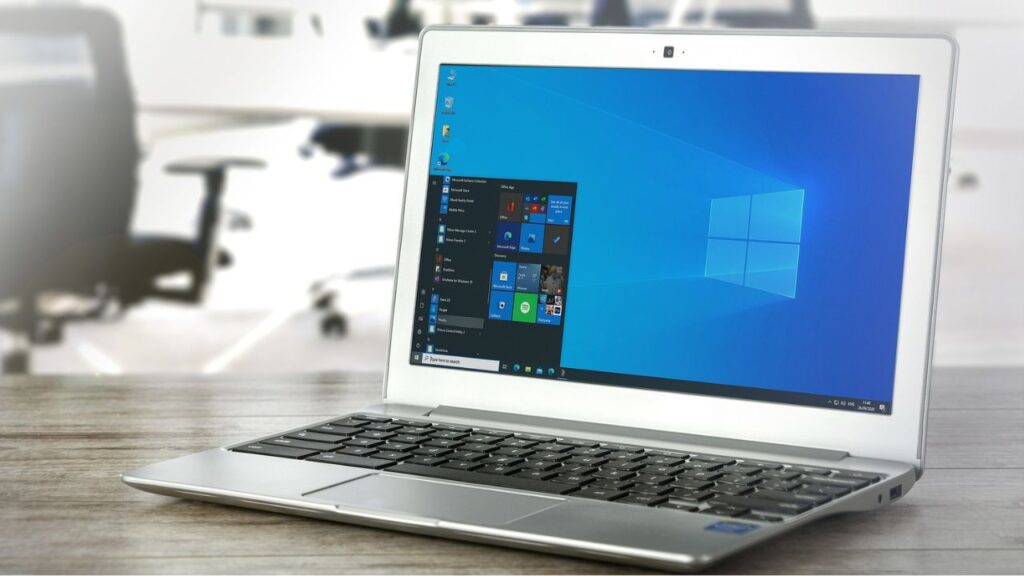In the digital world, computers operate by processing programs that execute various tasks. These programs are copied into the for the CPU to read, allowing the system to function efficiently. This process is fundamental to computing, enabling the execution of software applications, games, and system operations.
Programs are copied into memory for the CPU to read, allowing quick access to instructions. The CPU fetches, decodes, and executes these instructions from RAM, ensuring efficient performance. Faster RAM, SSDs, and CPU caches optimize this process for better speed.
In this article, we will explore how programs are copied into memory for the CPU to process, the types of memory involved, and how this process affects system performance.
Understanding the Role of the CPU!
The Central Processing Unit, or CPU, functions similarly to a computer’s brain. It reads and carries out instructions from different programs. When a person opens a program, it must be moved from storage, such as a hard drive or SSD, into RAM, which stands for Random Access Memory. This is important because the CPU needs to access data quickly, and RAM is much faster than storage drives. If programs stayed in storage, the CPU would take a long time to read them, making the computer slow. By moving the program into RAM, the CPU can work more efficiently and respond faster to commands.

Storage drives, like hard drives and SSDs, are mainly used to save data for the long term, but they are slower compared to RAM. The CPU needs quick access to instructions and data while running programs, so transferring them into RAM helps the computer work smoothly. When a program is running, the CPU constantly fetches data from RAM to perform tasks. This process allows the computer to handle multiple actions at once without delays. If RAM were not used, the computer would struggle to keep up with commands, and everything would take much longer to load.
How Are Programs Loaded into Memory?
When a program is executed, the operating system copies its necessary components into RAM, ensuring the CPU can quickly fetch instructions. The process typically follows these steps:
- Fetching from Storage: Programs are copied into the for the CPU to read from permanent storage (HDD/SSD) into RAM.
- Allocation of Memory: The OS allocates specific memory spaces for different parts of the program.
- Execution by the CPU: The CPU reads instructions from RAM, processes them, and sends the results to output devices or stores them in memory.
- Cache Utilization: Frequently used instructions are stored in CPU cache memory to reduce processing time.
Comparison of Different Memory Types in Program Execution!
The table below compares different types of memory involved in executing programs and how they affect CPU performance.
| Memory Type | Speed | Size | Purpose | Example Use |
| Registers | Fastest | Very Small | Holds immediate CPU instructions | Storing operands for arithmetic operations |
| Cache Memory | Very Fast | Small | Stores frequently accessed instructions | Keeping active program loops |
| RAM | Fast | Large | Stores running programs and data | Running software and applications |
| Virtual Memory | Slow (HDD/SSD) | Very Large | Acts as overflow when RAM is full | Handling large programs with insufficient RAM |
| HDD/SSD | Slowest (SSD faster) | Huge | Permanent storage of programs and files | Storing installed applications and OS files |
This comparison highlights why programs are copied into RAM for the CPU to read instead of being directly processed from storage. Faster memory types reduce delays and improve system efficiency.
Why Programs Must Be Copied into RAM?
Computers run programs by copying them into memory so the processor can read them quickly. This is because modern processors work at incredibly fast speeds, much faster than a hard drive can provide data. If the processor had to read directly from a hard drive, it would take a long time for each instruction to be processed, slowing everything down.
Hard drives, especially traditional ones, are much slower than the processor, so there would be constant delays. To prevent this, computers use RAM, which is a type of memory that works much faster than a hard drive. When a program runs, it is first copied into RAM, allowing the processor to access the data much more quickly and work smoothly without waiting for slow data transfers.
RAM acts like a high-speed storage area where the processor can quickly find the instructions it needs. Instead of waiting for the hard drive to send data bit by bit, the processor can instantly read information from RAM and execute tasks without delay.
This makes programs run efficiently and ensures that the computer responds quickly to user actions. Without RAM, computers would be much slower, and every operation would take longer to complete. By acting as a fast buffer between the processor and the hard drive, RAM helps the computer run programs smoothly, making everything from opening applications to browsing the internet much faster.
Types of Memory Used in the Process!
Several types of memory play a role in executing programs efficiently:
- RAM (Random Access Memory): Temporary memory where programs are copied into the for the CPU to read.
- Cache Memory: A smaller, faster memory that stores frequently accessed data.
- Registers: Ultra-fast storage locations within the CPU that hold immediate values for computation.
- Virtual Memory: A section of the hard drive used when RAM is full, though it is much slower.
Key Factors Affecting How Programs Are Copied into Memory!
1. Storage Device Speed:
The speed of an HDD or SSD impacts how quickly programs are copied into the for the CPU to read. SSDs are significantly faster than HDDs, reducing loading times.
2. Available RAM:
More RAM allows the system to load larger programs without relying on slow virtual memory, enhancing CPU efficiency.
3. CPU Processing Power:
A faster CPU can quickly fetch and execute instructions from RAM, improving overall performance.
4. Cache Memory Size:
Larger cache memory reduces the need for frequent RAM access, speeding up processing.
5. Operating System Efficiency:
A well-optimized OS manages memory allocation efficiently, preventing unnecessary slowdowns.
The Role of the Operating System!
The operating system is very important because it helps the computer manage how programs are loaded and run. When you open a program, the operating system makes sure it is copied into the right place so the CPU can read and process it. It takes care of memory by deciding how much space each program needs and ensuring that everything runs smoothly without using too much memory at once.

Without the operating system, programs would not know where to go, and the computer could become slow or even stop working properly. It also makes sure that different programs do not interfere with each other, allowing the computer to handle multiple tasks efficiently.
Another important job of the operating system is to control how data moves between storage and RAM. When you open a file or a program, the operating system quickly transfers the necessary data from the hard drive or SSD to RAM so that it can be accessed faster. It also prioritizes different tasks, ensuring that the most important ones get processed first. This helps the computer run smoothly and prevents delays.
Factors Affecting Performance!
Several factors influence how efficiently programs are copied into the for the CPU to read:
- Amount of RAM: More RAM allows more programs to be loaded simultaneously.
- Storage Speed: SSDs load programs into RAM faster than traditional HDDs.
- CPU Speed: A faster CPU can process instructions more efficiently.
- Cache Size: A larger cache reduces the need to fetch data from RAM frequently.
FAQs:
1. Why do programs need to be copied into memory for the CPU to read?
Programs are copied into RAM because it is much faster than storage drives. This allows the CPU to quickly access and process instructions without delays.
2. What happens if a program is too large for RAM?
If a program exceeds available RAM, the system uses virtual memory (a portion of the hard drive) as temporary storage, though this slows performance.
3. How does the CPU read instructions from memory?
The CPU fetches instructions from RAM, decodes them into machine language, and executes them. Frequently used data is stored in cache memory for faster access.
4. Does a faster storage device improve program loading speed?
Yes, SSDs are much faster than HDDs, reducing the time it takes to copy programs into RAM, improving overall system performance.
5. Can upgrading RAM make programs run faster?
Yes, more RAM allows more programs to be loaded at once, reducing reliance on slower virtual memory and improving CPU efficiency.
Conclusion:
Understanding how programs are copied into the for the CPU to read is fundamental to optimizing system performance. This process ensures smooth operation by allowing the CPU quick access to essential data. By using faster RAM, SSDs, and efficient OS memory management, computers can maximize efficiency and run applications seamlessly. Whether in personal computing or enterprise environments, optimizing this process remains a key aspect of improving overall performance.
Also Read:
- Intel i9 CPU Overheating on Gamers Nexus – Motherboard Compatibility and Cooling Challenges!\
- New CPU Installed fTPM/PSP NV Corrupted – All Guide!
- Ntel I9 Cpu Overheating Motherboard Setting – Everything You Need To Know!
- The Ultimate Guide to Choosing the Best CPU Fan for 7800X3D
- RPCS3 CPU Tier – A Top-Tier CPU With Unmatched Single-Core Performance!










